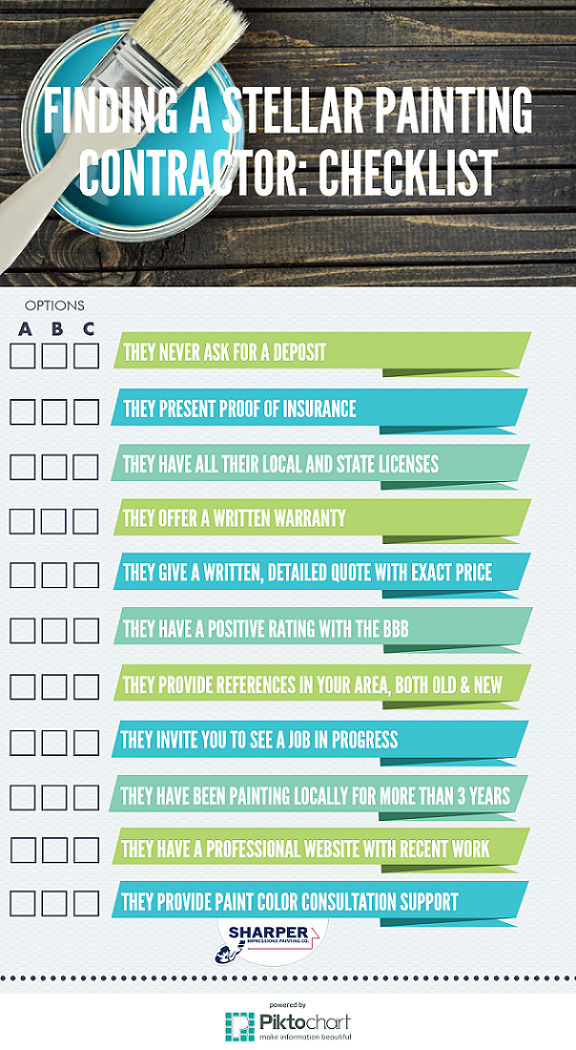Discover The Impact Of Climate Condition On Your Exterior Painting Task For A Perfect Surface
Discover The Impact Of Climate Condition On Your Exterior Painting Task For A Perfect Surface
Blog Article
Post By-Reilly Dowling
Recognizing exactly how weather conditions can influence the end result of an external painting endeavor is paramount for achieving a flawless surface. From temperature level changes changing paint bond to moisture levels affecting drying times, each component of weather plays a considerable role in the success of your project. Moreover, wind rate and rainfall can present unexpected obstacles that may jeopardize the top quality of the outcome. As we browse through the subtleties of weather's effect on external painting, it comes to be evident that meticulous planning and critical timing are critical for making sure a specialist and long lasting result.
Ideal Temperature Level Range for Painting
When taking into consideration exterior painting projects, the ideal temperature variety plays an important duty in achieving optimal results. Painting in the ideal temperature problems makes sure that the paint adheres properly to the surface, dries uniformly, and remedies successfully. Typically, commercial residential painting advised temperature level range for outside paint is between 50 to 85 levels Fahrenheit.
Paint in temperature levels below 50 levels Fahrenheit can bring about issues such as inadequate paint adhesion, extended drying times, and an enhanced probability of breaking or peeling.
On the other hand, paint in temperatures above 85 degrees Fahrenheit can trigger the paint to completely dry also quickly, bring about blistering, gurgling, and an unequal finish.
To achieve the best results, it is important to examine the weather forecast before starting an external paint task. Ideally, objective to repaint throughout light weather conditions with moderate temperature levels and reduced moisture degrees.
Impacts of Humidity on Paint Drying
Humidity degrees significantly impact the drying out process of paint applied to exterior surface areas. High humidity can extend the drying time of paint, resulting in prospective concerns such as dripping, spotting, or even the formation of bubbles on the repainted surface. Excess dampness airborne reduces the dissipation of water from the paint, preventing the curing process. This is especially bothersome for water-based paints, as they depend on evaporation for drying.
On the other hand, low humidity levels can also affect paint drying out. Incredibly dry problems might trigger the paint to dry also quickly, bring about bad attachment and a harsh finish. In such instances, including a paint conditioner or splashing a great mist of water in the air can aid manage humidity degrees and improve the paint outcome.
To guarantee optimal drying out conditions, it is recommended to repaint when the humidity degrees range between 40% and 50%.
Surveillance moisture levels and taking suitable measures can assist accomplish a smooth and sturdy paint finish on exterior surface areas.
Wind and Rainfall Factors To Consider
Wind speed and precipitation are crucial variables that dramatically influence the success of an external painting job.
When it concerns wind, both speed and direction are vital considerations. High wind rates can cause paint to completely dry as well swiftly, leading to a poor do with potential issues like splitting or unequal texture. Additionally, wind can carry particles that might stick to the damp paint, resulting in imperfections. Consequently, painters should intend to service days with light to modest winds for ideal painting conditions.
On the other hand, rainfall, whether rain or snow, can be extremely harmful to the end result of an outside painting task. Wetness from rainfall can prevent paint attachment, triggering peeling off and bubbling over time. It is essential to stay clear of painting during wet or snowy weather condition to make certain the long life and high quality of the paint work. Painters ought to also enable adequate time for the surface area to completely dry completely after any kind of precipitation prior to commencing or resuming the painting process.
painting mobile home walls , climate condition play a considerable role in the end result of an external painting task. The ideal temperature level array, moisture levels, wind rate, and precipitation all contribute to the success or failing of the paint work.
It is vital to think about these elements and strategy accordingly to guarantee appropriate paint attachment, drying out times, and overall top quality of the finished item.
